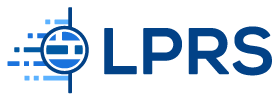Lease vs Buy: How to Get the Best Rate and Contract Terms?
For many organizations, leasing is an attractive option for procuring necessary commercial equipment. When comparing a lease vs purchase, leasing can be enticing because it offers the potential for some substantial benefits. These include a lower total cost for the equipment and avoidance of the risk of technical obsolescence (a particularly acute risk with fast-changing IT and medical equipment).
But the benefits of equipment leasing can only be achieved if you negotiate your lease agreements with appropriate terms and rates.
The Risks of Leasing
In general, businesses looking for the best equipment procurement option will be concerned with rates. What you may have discovered is that the stated monthly rental rates for many leases are lower than the stated rates for other procurement alternatives. However—in the case of commercial equipment procurement—the lower the rate, the higher the risk. Lower lease rates very often do not translate into lower all-in cost for the equipment.
Commercial loans usually have higher rates than equipment leases, but when deciding about lease vs purchase, you also must account for the risks inherent in the terms of most leases. These risks include:
- Interim rent
- Onerous notice requirements
- Unreasonable casualty rates
- Default provisions that make default likely
- Return conditions that are almost impossible to comply with
- Ambiguous definition of fair market value for the purchase option at end of lease
The low rental rate may look great upfront, but there’s usually substantial risk associated with that low rate.
Getting the Best Value
To get the best rate and terms, first you need to identify all the risks associated with equipment leasing and analyze past leases to determine the historical cost. Then you can put an accurate cost on the leasing option based on actual past performance, rather than relying on overly optimistic presumptions about the ability to mitigate risk in operations (e.g., assuming equipment will be ready or able to be returned at end of lease). Until the historical costs of leasing are understood, an astute choice about lease vs purchase simply isn’t possible.
Knowing historical leasing costs also gives a lessee much needed leverage in negotiations. If risk can be quantified, then pressure can be put on the lessor to remove the risky language from the lease agreement or to adjust rates accordingly to compensate for the risk.
Knowledge of Leasing Agreement Language Is Essential
Equipment leasing companies are intimately familiar with the terms in lease agreements that often produce additional lessee costs and increase lessor profitability. In many cases, their business models are largely predicated on the failure of lessees to cap their risk in lease agreements.
Many lessees, on the other hand, don’t have sufficient knowledge of how equipment lease agreements are structured. Even lawyers aren’t usually able to identify the full scope of the business risk if equipment leasing isn’t one of their specialties. For this reason, it’s often a cost-saving move to work with equipment leasing experts to ensure the risk in lease agreements is sufficiently accounted for and capped. With this equipment leasing proficiency, you can ensure you won’t be at a disadvantage in negotiations, and you will be better able to quantify the total all-in costs involved in the lease vs purchase decision.
